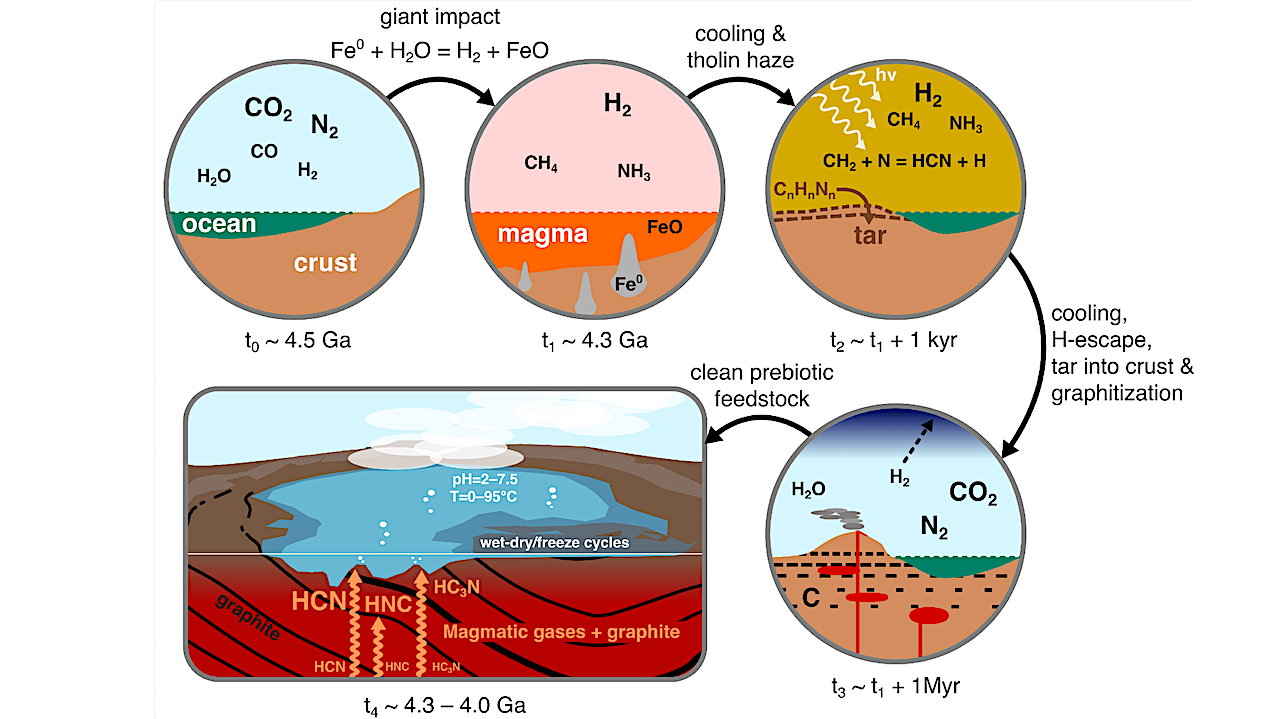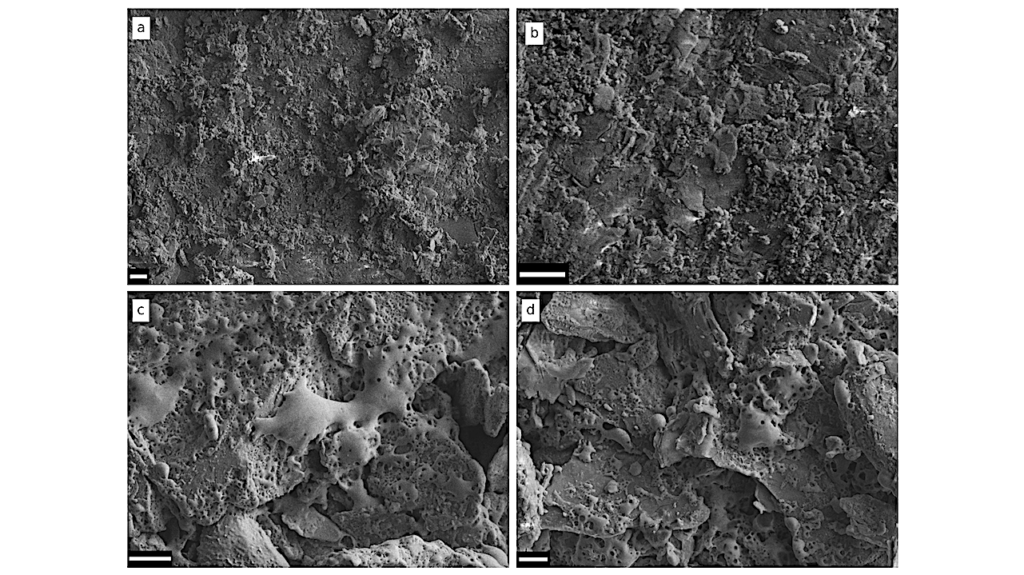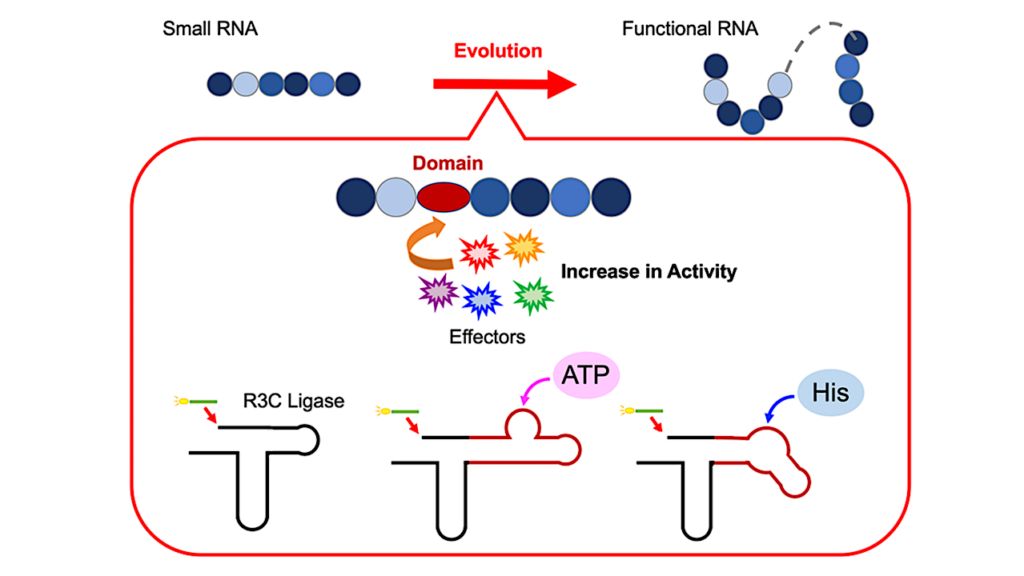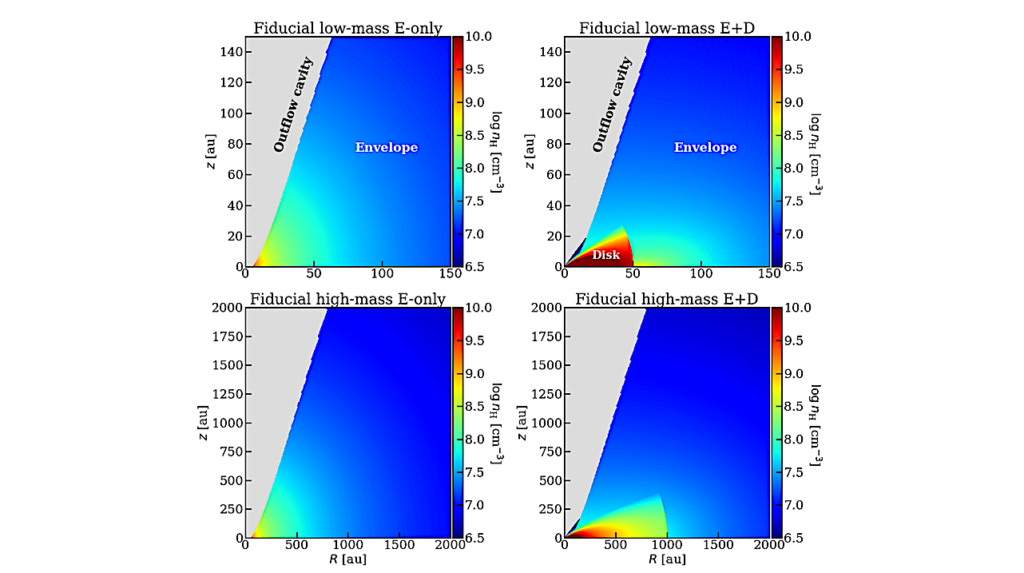Drawing A Line Back To The Origin Of Life On Earth

Scientists in Cambridge University suggest molecules, vital to the development of life, could have formed from a process known as graphitisation. Once verified in the laboratory, it could allow us to try and recreate plausible conditions for life’s emergence.
How did the chemicals required for life get there?
It has long been debated how the seemingly fortuitous conditions for life arose in nature, with many hypothesises reaching dead ends. However, researchers at the University of Cambridge have now modelled how these conditions could occur, producing the necessary ingredients for life in substantial quantities.
Life is governed by molecules called proteins, phospholipids and nucleotides. Past research suggests that useful molecules containing nitrogen like nitriles – cyanoacetylene (HC3N) and hydrogen cyanide (HCN) – and isonitriles – isocyanide (HNC) and methyl isocyanide (CH3NC) – could be used to make these building blocks of life. As of yet though, there has been no clear way to make all of these in the same environment in substantial amounts.
In a recent study published in Life, the group have now found that through a process known as graphitisation, significant quantities of these useful molecules can be theoretically made. If the model can be verified experimentally, this suggests that the process was a likely step for early Earth on its journey towards life.
Why is this process more likely to have occurred than others?
Much of the problem with previous models, is that a range of other products are created along with the nitriles. This makes a messy system which hinders the formation of life.
‘A big part of life is simplicity,’ said Dr Paul Rimmer, Assistant Professor of Experimental Astrophysics at the Cavendish Laboratory, and co-author of the study. ‘It’s order. It’s coming up with a way to get rid of some of the complexity by controlling what chemistry can happen.’
We don’t expect life to be produced in a messy environment. So, what is fascinating is how graphitisation itself cleans the environment, since the process exclusively creates these nitriles and isonitriles, with mostly inert side-products.
‘At first, we thought this would spoil everything, but actually, it makes everything so much better. It cleans the chemistry,’ said Rimmer.
This means graphitisation could provide the simplicity scientists are looking for, and the clean environment required for life.
How does the process work?
The Hadean eon was the earliest period in Earth’s history, when the Earth was very different to our modern Earth. Impacts with debris, sometimes the size of planets, were not unheard of. The study theorises that when the early Earth was hit with an object roughly the size of the moon, around 4.3 billion years ago, the iron that it contained reacted with water on Earth.
‘Something the size of the moon hit early Earth, and it would have deposited a large amount of iron and other metals’ said co-author Dr Oliver Shorttle, Professor of natural philosophy at the Institute of Astronomy and Department of Earth Sciences in Cambridge.
The products of the iron-water reaction condense into a tar on the surface of the Earth. The tar then reacts with magma at over 1,500°C and the carbon in the tar becomes graphite- a highly stable form of carbon- and what we use in modern pencil leads!
‘Once the iron reacts with the water, a mist forms that would have condensed and mixed with the Earth’s crust. Upon heating, what’s left is, lo and behold, the useful nitrogen containing compounds,’ said Shorttle.
What evidence exists to support this idea?
The evidence to support this theory partly comes from the presence of komatiitic rocks. Komatiite is a type of volcanic rock which are formed when very hot magma(>1,500°C) cools.
‘Komatiite was originally found in South Africa. The rocks date back to around 3.5 billion years ago,’ said Shorttle. ‘Crucially, we know that these rocks only form at scorching temperatures, around 1,700°C! That means the magma would already have been hot enough to heat the tar and create our useful nitriles.’
With the link confirmed, the authors suggest that nitrogen containing compounds would be made via this method- since we see komatiite, we know the temperature of magma on early Earth sometimes must have been in excess of 1,500°C.
What next?
Now experiments must try to recreate these conditions in the lab, and study whether the water, which is inevitably in the system, eats up the nitrogen compounds, breaking them apart.
‘Though we don’t know for sure that these molecules started out life on Earth, we do know that life’s building blocks must be made from molecules that survived in water,’ said Rimmer. ‘If future experiments show that the nitriles all fall apart, then we’ll have to look for a different way.’
A Surface Hydrothermal Source of Nitriles and Isonitriles, Life (open access)
Astrobiology








